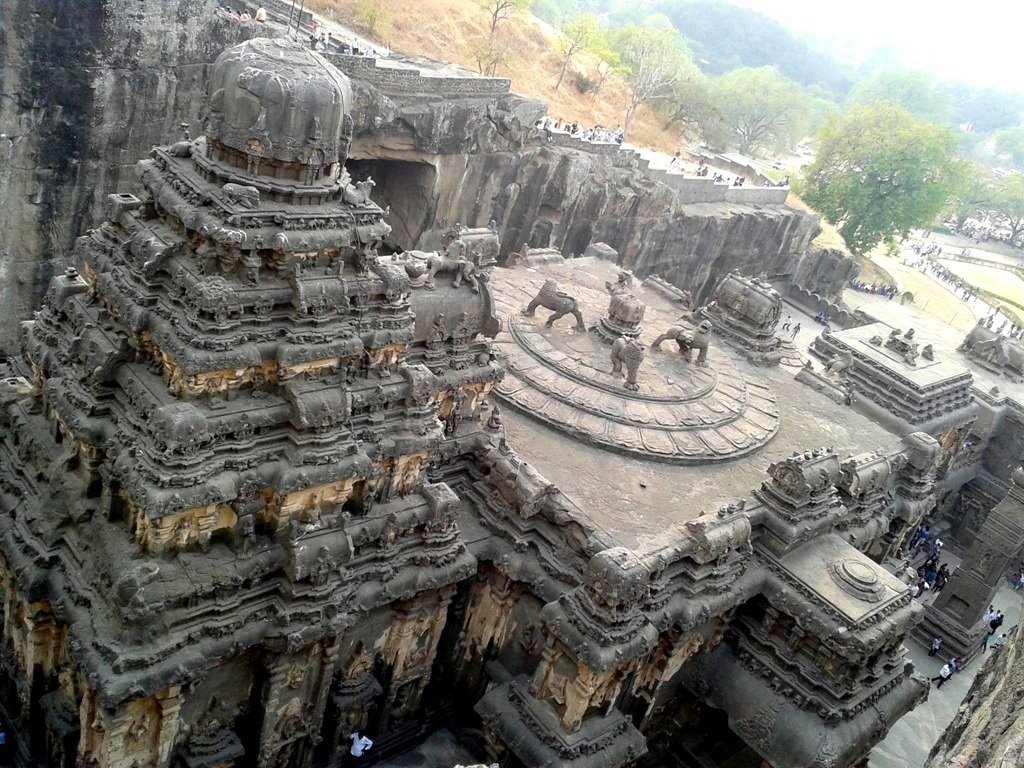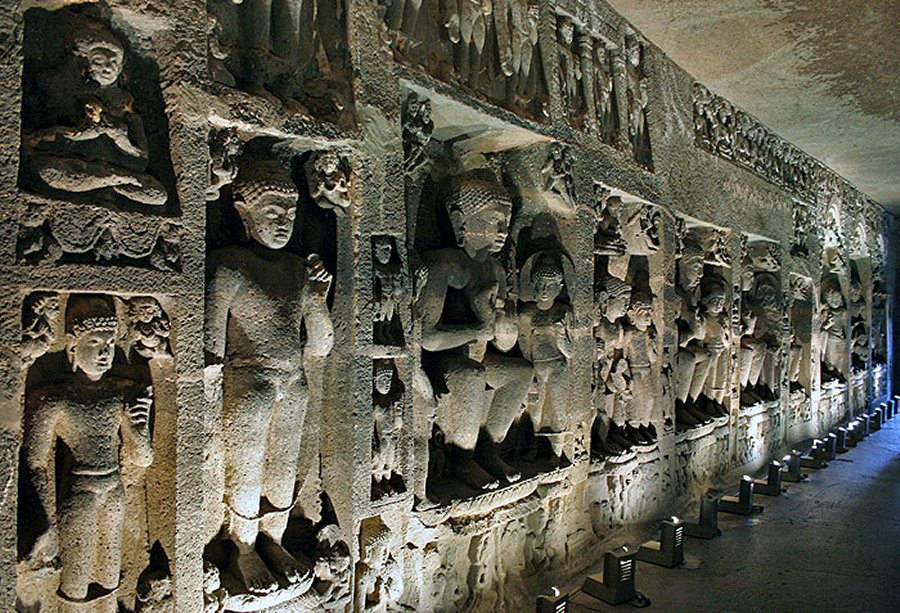Cannabis Protected India’s Famous Ellora Caves From Decay For 1,500 Years
MessageToEagle.com – Indian archaeologists have discovered that hemp – a mix of hemp with clay and lime plaster – has prevented the famous ancient Ellora caves from degrading over the 1,500 years they have been in existence.
“The use of hemp helped the caves and most of the paintings remain intact at the 6th century Unesco World Heritage site,” according to a new study conducted by archaeologist Rajdeo Singh (ASI) and botanist MM Desai at Dr Babasaheb Ambedkar Marathwada University, Maharashtra, India.

Using two techniques such as Fourier transform, infra-red spectroscopy and stereo-microscopic studies, researchers were able to conclude that hemp, commonly known as ganja or bhang, had helped in preventing insect activity at Ellora.
The study indicates that many valuable properties of hemp were known to Indians in the 6th century.
Gigantic Kailasa Temple Emerging From A Mountainside: Engineering Marvel Of India’s Master Builders
Ajanta Caves: Incredible Accomplishment Of India’s Ancient Stonecutters
“Hemp was extensively used in Ellora as well as by the Yadavas, who built the Deogiri (Daulatabad) fort in the 12th century. Hemp was not used in the Ajanta caves, which are about 30 rock-cut Buddhist structures dating back to the 2nd century BC. Rampant insect activity has damaged at least 25% of the paintings at Ajanta,” Singh told TOI.

The archaeologist, who has been engaged in the chemical treatment and conservation of ancient paintings at Ajanta for about 11 years, said the outcome of the study was “a discovery in itself”.
“Studies conducted in Europe suggested that buildings constructed with the use of cannabis sativa could last for 600 to 800 years. Ellora has proved that only 10% of cannabis mixed with clay or lime in the plaster could last for over 1,500 years,” he said.
However, there is a problem because the use of cannabis cultivation, transport, possession and consumption of marijuana is banned under Indian law.
Experts say that the existing Narcotic Drugs and Psychotropic Substances Act will have to be amended before hemp can be used on a large scale for construction. For now, “anybody found with the substance will face action.”
The study is published in the March 10 issue of the journal Current Science.
MessageToEagle.com
Related Posts
-
 The First Conservationists May Have Been Early Pacific Islanders Who Started The Practice 3,000 Years Ago
No Comments | Sep 29, 2021
The First Conservationists May Have Been Early Pacific Islanders Who Started The Practice 3,000 Years Ago
No Comments | Sep 29, 2021 -
 Rare Ancient Decorated Belt Of Late Roman Official Burial Discovered In Leicester
No Comments | Jul 13, 2016
Rare Ancient Decorated Belt Of Late Roman Official Burial Discovered In Leicester
No Comments | Jul 13, 2016 -
 Cave Hidden Under Pembroke Castle in Wales Could Hold Secrets Dating Back 10,000 Years
No Comments | Jul 25, 2022
Cave Hidden Under Pembroke Castle in Wales Could Hold Secrets Dating Back 10,000 Years
No Comments | Jul 25, 2022 -
 Discovered 2000-Year-Old Mauryan Structure May Lead To The Lost Ashoka Pillar Site
No Comments | Sep 30, 2021
Discovered 2000-Year-Old Mauryan Structure May Lead To The Lost Ashoka Pillar Site
No Comments | Sep 30, 2021 -
 Ancient DNA Of Segorbe Giant Reveals A Brutal Event In Medieval Spain
No Comments | Sep 26, 2021
Ancient DNA Of Segorbe Giant Reveals A Brutal Event In Medieval Spain
No Comments | Sep 26, 2021 -
 Arrowhead Made Of Meteoritic Iron From The Late Bronze Age Settlement Of Mörigen, Switzerland – Examined
No Comments | Aug 2, 2023
Arrowhead Made Of Meteoritic Iron From The Late Bronze Age Settlement Of Mörigen, Switzerland – Examined
No Comments | Aug 2, 2023 -
 Largest Ever Human Family Tree: 27 Million Ancestors Mapped
No Comments | Feb 26, 2022
Largest Ever Human Family Tree: 27 Million Ancestors Mapped
No Comments | Feb 26, 2022 -
 From Chrome Plating To Nanotubes: The ‘Modern’ Chemistry First Used In Ancient Times
No Comments | Feb 5, 2016
From Chrome Plating To Nanotubes: The ‘Modern’ Chemistry First Used In Ancient Times
No Comments | Feb 5, 2016 -
 Idol Of Pachacamac Inca God Reveals Its Colors
No Comments | Jan 22, 2020
Idol Of Pachacamac Inca God Reveals Its Colors
No Comments | Jan 22, 2020 -
 What Can The Fate Of Ancient Cities Teach Us About Surviving Climate Change
No Comments | Oct 1, 2021
What Can The Fate Of Ancient Cities Teach Us About Surviving Climate Change
No Comments | Oct 1, 2021

